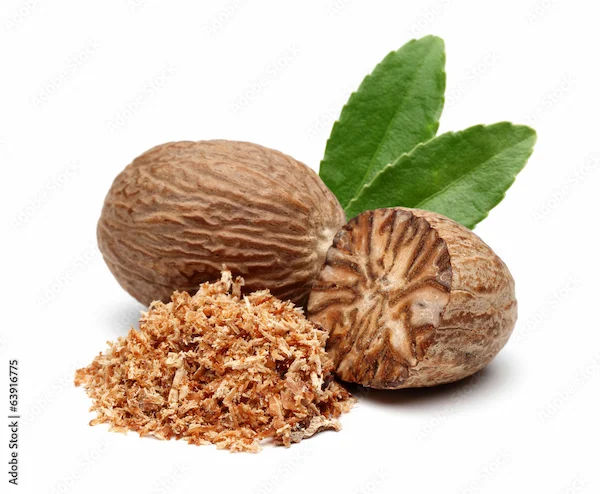Indian Fruits Safe for Diabetics
Discover 10 Indian fruits safe for diabetics, fruits to avoid, and expert tips on managing blood sugar while enjoying nature’s sweetness. Eat smart, live well!

Written by Dr. Shaik Abdul Kalam
Reviewed by Dr. Rohinipriyanka Pondugula MBBS
Last updated on 22nd Jul, 2025

Introduction
Living with diabetes doesn’t mean you have to give up on the joy of eating fruits. In fact, many Indian fruits are not only delicious but also safe for diabetics when consumed in moderation. Fruits provide essential vitamins, minerals, fibre, and antioxidants that support overall health. However, choosing the right fruits—those with a low glycemic index (GI); can help keep your blood sugar levels stable.
In this article, we’ll explore:
✔ Best Indian fruits for diabetics
✔ Fruits to avoid or limit
✔ Tips for including fruits in a diabetic-friendly diet
✔ When to consult a doctor
Why Fruits Matter for Diabetics
Fruits contain natural sugars (fructose), but they also have fibre, which slows down sugar absorption and prevents blood sugar spikes. Many Indian fruits are rich in:
- Vitamin C (boosts immunity)
- Potassium (supports heart health)
- Antioxidants (reduce inflammation)
However, some fruits have a high glycemic index (GI), meaning they raise blood sugar quickly. Diabetics should focus on low-GI fruits and control portion sizes.
Best Indian Fruits for Diabetics
Here are some diabetes-friendly fruits commonly found in India:
1. Jamun (Black Plum)
- GI: Low
- Helps lower blood sugar due to jamboline, a compound that improves insulin activity.
- Rich in vitamin C, iron, and antioxidants.
- How to eat: 6-8 jamuns per day (fresh or as juice without sugar).
2. Guava (Amrood)
- GI: Low
- High in fibre, which slows sugar absorption.
- Contains vitamin C (4 times more than oranges!).
- How to eat: Eat with the skin for extra fibre (½ medium guava per serving).
3. Apple (Seb)
- GI: Low to medium
- Packed with soluble fibre (pectin), which helps control blood sugar.
- How to eat: One small apple with the skin (avoid juice).
4. Pear (Nashpati)
- GI: Low
- High in fibre and antioxidants.
- How to eat: One small pear (preferably with skin).
5. Orange (Santra)
- GI: Low
- Contains fibre and vitamin C without spiking sugar.
- How to eat: One small orange (avoid packaged juice).
6. Papaya (Papita)
- GI: Medium (eat in moderation)
- Rich in vitamin A and fibre.
- How to eat: ½ cup of ripe papaya (avoid overripe ones).
Consult Top Nutritionists For More Benefits
7. Berries (Strawberry, Mulberry)
- GI: Very low
- High in fibre and antioxidants.
- How to eat: A handful (½ cup) per day.
8. Coconut (Nariyal)
- GI: Low (only fresh coconut, not sweetened products)
- Contains healthy fats and fibre.
- How to eat: 1-2 small pieces of fresh coconut.
9. Kiwi
- GI: Low
- High in fibre and vitamin C.
- How to eat: One small kiwi per day.
10. Pomegranate (Anar)
- GI: Low to medium
- Rich in antioxidants and fibre.
- How to eat: ½ cup of seeds (avoid juice with sugar).
Fruits Diabetics Should Limit or Avoid
Some fruits have a high glycemic index and can spike blood sugar. These should be eaten rarely or in very small portions:
Mango (Aam) – High sugar content.
Banana (Kela) – Very ripe bananas have high GI.
Grapes (Angoor) – High in natural sugars.
Chikoo (Sapota) – High sugar and calories.
Pineapple (Ananas) – Can raise blood sugar quickly.
If you eat these, limit portion size (e.g., 2-3 small pieces) and pair them with nuts or yogurt to slow sugar absorption.
Tips for Eating Fruits Safely with Diabetes
Here are some tips for eating fruits safely with diabetes:
Eat whole fruits (avoid juices, which lack fibre).
Pair with protein/fibre (e.g., nuts, seeds, yogurt) to slow sugar absorption.
Control portion size – Stick to one small fruit or ½ cup per serving.
Avoid overripe fruits – They have higher sugar content.
Monitor blood sugar after eating new fruits to see how your body reacts.
When to Consult a Doctor
If you’re unsure about which fruits are safe for you, or if your blood sugar levels fluctuate too much, consult a diabetes specialist. You can easily book an online consultation with an endocrinologist on Apollo 24|7 for personalised advice.
Conclusion
You don’t have to avoid fruits if you have diabetes—just choose wisely! Low-GI Indian fruits like jamun, guava, apple, and berries can be part of a healthy diabetic diet when eaten in moderation.
Remember:
✔ Portion control is key.
✔ Pair fruits with protein/fibre.
✔ Monitor your blood sugar regularly.
If you need expert guidance, Apollo 24|7 offers diabetes management consultations and lab tests to help you stay on track. Stay healthy, stay sweet (the right way)! 🌿🍏
Would you like help with a personalised diet plan? Book a consultation today!
Consult Top Nutritionists
Consult Top Nutritionists For More Benefits

Dr. Ramalinga Reddy
General Physician
5 Years • MBBS MD General medicine
Bengaluru
PRESTIGE SHANTHINIKETAN - SOCIETY CLINIC, Bengaluru
Dt. Ila Sharma
Clinical Nutritionist
18 Years • Master in food & Nutrition
Gurugram
VIPUL GREENS - SOCIETY CLINIC, Gurugram
Ms. Bhavana Shetty
Dietician
7 Years • DDHN & Masters in Clinical Nutrition & Dietetics
Bangalore
Apollo Sugar Clinic, Seetha circle bangalore, Bangalore
Dr Sumanth R
General Physician
2 Years • MBBS
Bengaluru
PRESTIGE SHANTHINIKETAN - SOCIETY CLINIC, Bengaluru
Mrs Sneha P V
Nutritionist
10 Years • Master of science in Food and Nutrition
Bangalore
Apollo Clinic Bellandur, Bangalore
Consult Top Nutritionists

Dr. Ramalinga Reddy
General Physician
5 Years • MBBS MD General medicine
Bengaluru
PRESTIGE SHANTHINIKETAN - SOCIETY CLINIC, Bengaluru
Dt. Ila Sharma
Clinical Nutritionist
18 Years • Master in food & Nutrition
Gurugram
VIPUL GREENS - SOCIETY CLINIC, Gurugram
Ms. Bhavana Shetty
Dietician
7 Years • DDHN & Masters in Clinical Nutrition & Dietetics
Bangalore
Apollo Sugar Clinic, Seetha circle bangalore, Bangalore
Dr Sumanth R
General Physician
2 Years • MBBS
Bengaluru
PRESTIGE SHANTHINIKETAN - SOCIETY CLINIC, Bengaluru
Mrs Sneha P V
Nutritionist
10 Years • Master of science in Food and Nutrition
Bangalore
Apollo Clinic Bellandur, Bangalore




